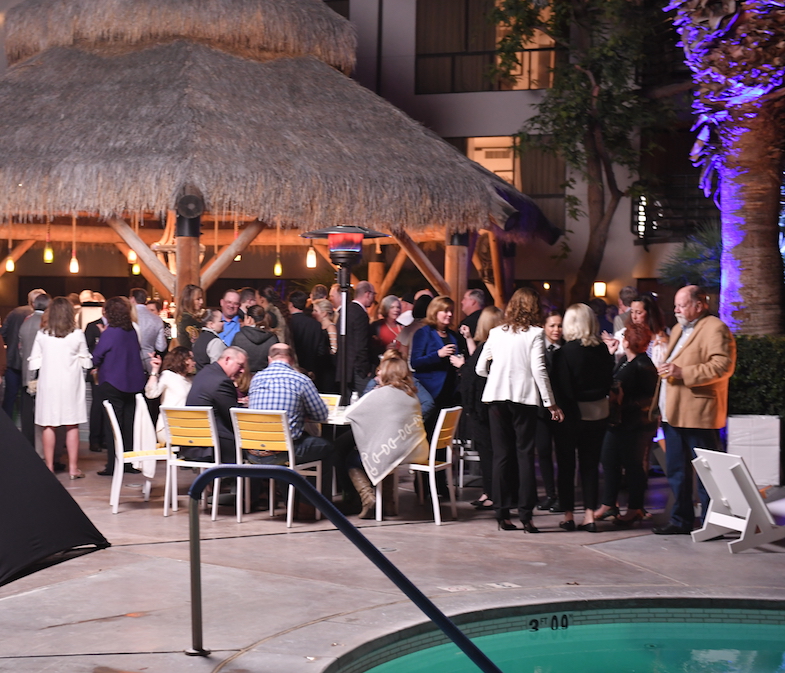
January 16-19, 2019
Riviera Resort, Palm Springs California
It’s hard to say no to a trip to California that mixes business with warmth in mid-January. Someone forgot to tell the locals to shut off the rain however, as upon arrival there had been so much rain, some of the buildings at the sprawling Riviera Resort and Spa had to be closed, thus “forcing” many of us to an even nicer hotel closer to the legendary shopping and dining district. Being a short five miles away was no problem, as those who chose to stay at the Renaissance Inn instead found that the community has a vibrant nightlife within easy walking distance.
Record rains had the locals complaining of leaking roofs and burst pipes that hadn’t happened in the past 30 years according to some. But for those of us from the middle or eastern part of the country, which was most of us, it wasn’t that bad, and by the time the clouds cleared late Thursday, we were welcoming the splendid mountain views and even able to take the world’s largest rotating aerial tram to the wintery top of one of the mountains. Palm Springs being a relatively small city, all the sightseeing and shopping were pretty much a five-minute car ride away. The UPHA did a fine job with the locale, as they do most years.
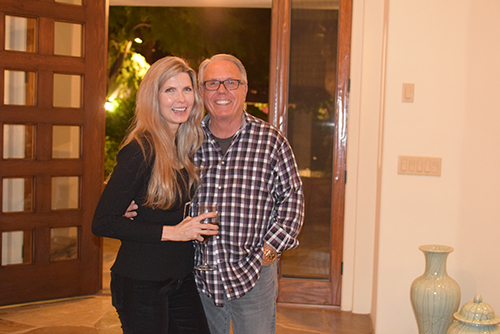 The rains did subside Wednesday night just enough to allow Joe O’Brien and Melissa Moore to host one of the more delicious and fabulously welcoming welcome parties the UPHA has seen in the last few years. Held at Joe’s house about a 30-minute bus ride away, the couple greeted roughly 120 guests one at a time at the lovely house, that basically opened into a pool area, creating a huge space and housing the masses very comfortably. One of the best-stocked bars of top shelf booze was easily and frequently accessible, as were the delicious finger foods of lollypop lamb chops, shrimps that were likely really prawns, and of course beef tenderloin sandwiches and plenty of desserts. It was well thought out, and our hosts were wonderful enough to give tours of the unique circular house. With a beginning like this, you knew it was going to be a great convention with no angst, all just happy wonderful vacation-like meetings (heavy sarcasm).
The rains did subside Wednesday night just enough to allow Joe O’Brien and Melissa Moore to host one of the more delicious and fabulously welcoming welcome parties the UPHA has seen in the last few years. Held at Joe’s house about a 30-minute bus ride away, the couple greeted roughly 120 guests one at a time at the lovely house, that basically opened into a pool area, creating a huge space and housing the masses very comfortably. One of the best-stocked bars of top shelf booze was easily and frequently accessible, as were the delicious finger foods of lollypop lamb chops, shrimps that were likely really prawns, and of course beef tenderloin sandwiches and plenty of desserts. It was well thought out, and our hosts were wonderful enough to give tours of the unique circular house. With a beginning like this, you knew it was going to be a great convention with no angst, all just happy wonderful vacation-like meetings (heavy sarcasm).
Thursday the meetings started for the public after a lot of committee meetings from the previous days. The UPHA Associate membership was small in numbers compared to the Professional meeting we could hear through the walls, and it was basically just questions back and forth about what the professionals were talking about, what the whole Safe Sport thing meant, and of course, how we as associates can assist the professionals in growing the breed and improving the showing experience we are all so fortunate to participate in because of the professionals. Associate President Carol Reedy also talked about the growing implications and rewards from the Ribbons of Service Program in this short primer for things to come.
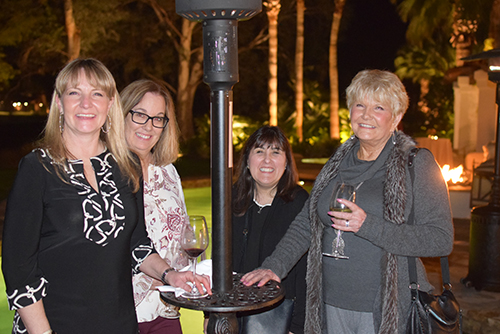 It was said that over in the Professional meeting some key items of interest were discussed, including the current standing of the World’s Championship Horse Show starting on Thursday, which was very much against the findings of the survey sent out last year. Show manager Scarlett Mattson said the Fair Board would meet later that month and that she was hopeful they would heed to our wishes, but perhaps start the classes Saturday morning and start all morning classes at 10 instead of nine. There would still be two extra days to acclimate to the ring like last year. Also, Cardinal Stadium is down, and four tents will occupy that space this year. She’s also going to require post entries for the championship nights to be in by Thursday, and hopes to have a rule change requiring at least the top two ribbon winners of the seven World’s Grand Championship qualifying classes to return for the Saturday night final.
It was said that over in the Professional meeting some key items of interest were discussed, including the current standing of the World’s Championship Horse Show starting on Thursday, which was very much against the findings of the survey sent out last year. Show manager Scarlett Mattson said the Fair Board would meet later that month and that she was hopeful they would heed to our wishes, but perhaps start the classes Saturday morning and start all morning classes at 10 instead of nine. There would still be two extra days to acclimate to the ring like last year. Also, Cardinal Stadium is down, and four tents will occupy that space this year. She’s also going to require post entries for the championship nights to be in by Thursday, and hopes to have a rule change requiring at least the top two ribbon winners of the seven World’s Grand Championship qualifying classes to return for the Saturday night final.
President Smith Lilly encouraged all to be respectful of the upcoming Safe Sport meeting, and after other various business was handled, nominations for the incoming UPHA executive positions were made to retain the current executives, with Smith Lilly retaining the presidency, Cindy Mugnier as first and Lynda Freseth as second. This motion was nearly unanimous, lending some important continuity during these unique times. Many reports and other doings of course went on, as required of annual membership meetings. While I was not privy to all of them, I used my sources for the information.
The equitation meeting was open to the public and led by Missy Hughes-Smith, and one of the topics of conversation was that out of the entry fee for the Challenge Cup classes, $50 should come back to the UPHA Equitation Committee to help with the expenses of the championship classes at the Royal. This leaves the shows free to charge what they want, but the UPHA is covered for their expenses. Even though a rider qualifies with a red or blue ribbon, the reserve winner can continue to show in qualifying classes until they earn a blue ribbon if they so choose.
The ARHPA meeting was up next, with President James Nichols at the podium, and their primary concern was the proposed rule change that only Standardbreds would be eligible to show at the WCHS. This had split emotions and it was decided to withdraw the proposal.
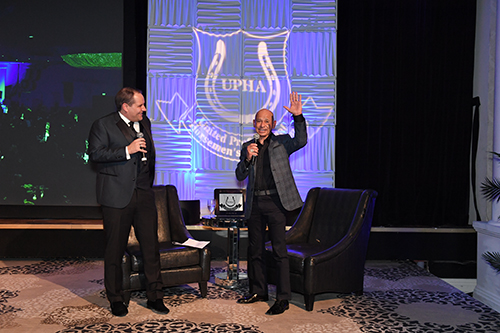 Mark Farrar had emcee duties during the first awards luncheon, with plenty of awards to go around. President Maureen Quackenbush held a quick AHHS meeting after the lunch, but the general membership meeting will be held in March during the Limited Breeders Sweepstakes in Indianapolis.
Mark Farrar had emcee duties during the first awards luncheon, with plenty of awards to go around. President Maureen Quackenbush held a quick AHHS meeting after the lunch, but the general membership meeting will be held in March during the Limited Breeders Sweepstakes in Indianapolis.
The ASHA General Membership meeting was the big event of Thursday afternoon, with President David Mount imploring how important it was for all the alphabet organizations to work together, not only in dealing with the USEF and Safe Sport, but also in growing the breed, and thereby the businesses of all those in attendance. He introduced long time exhibitor and former Marriott Executive Terri Dolan to the masses as the new Executive Director, and I must say she seems to have the knowledge and desire to reverse the sins of the past and lead us in a positive direction. Her professionalism and ability to answer all questions with real answers was noticeable and appreciated. She’s implemented a 19-point strategic plan to create a standard operating procedure, making the association more transparent and effective. In short, no more passing the buck; people will have answers and the ability to give those answers definitively. She exclaimed that she’s still catching up after only being on the job for six months, but has made key hires to help the association. Jessica Cushing is in charge of PR and Marketing, and also did a wonderful job making the electronics work. She has already made noticeable improvements to the ASHA’s social media footprints. The new ASHA app for the WCHS will be improved upon for 2019 based on feedback.
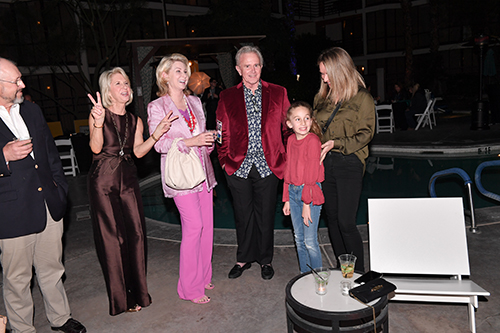 A general discussion was held on the fact that kids aren’t as exposed to horses as they were in the past, and barns and members need to just avail themselves to any kid interested in just seeing a horse. It was mentioned that our sport is expensive, but it was also mentioned that many sports are equally expensive, and that things like competitive dance, ballet, hockey and other sports can easily cost as much as it costs to compete in our world. The bottom line is that with many barns moving into the country, the exposure has lessened. In cities like St. Louis, there isn’t even a Saddlebred barn around at which to see them, despite the presence of the St. Louis National Charity Horse Show. Hunter/jumper barns are everywhere instead, but no cheaper in cost to the consumer in many instances. It was mentioned that lack of lesson programs from barns that do exist will be a growing problem for our breed, and that of course too much emphasis is placed on a handful of big shows, while ignoring the fun and often less costly smaller shows. Long-term thinking and short term doing were pretty much the key thoughts in this meeting. Fewer mares in foal was also a question from the ASR, but that was addressed in further detail the next day. Betsy Boone and Judy Werner were elected to the nominating committee.
A general discussion was held on the fact that kids aren’t as exposed to horses as they were in the past, and barns and members need to just avail themselves to any kid interested in just seeing a horse. It was mentioned that our sport is expensive, but it was also mentioned that many sports are equally expensive, and that things like competitive dance, ballet, hockey and other sports can easily cost as much as it costs to compete in our world. The bottom line is that with many barns moving into the country, the exposure has lessened. In cities like St. Louis, there isn’t even a Saddlebred barn around at which to see them, despite the presence of the St. Louis National Charity Horse Show. Hunter/jumper barns are everywhere instead, but no cheaper in cost to the consumer in many instances. It was mentioned that lack of lesson programs from barns that do exist will be a growing problem for our breed, and that of course too much emphasis is placed on a handful of big shows, while ignoring the fun and often less costly smaller shows. Long-term thinking and short term doing were pretty much the key thoughts in this meeting. Fewer mares in foal was also a question from the ASR, but that was addressed in further detail the next day. Betsy Boone and Judy Werner were elected to the nominating committee.
One of the best meetings of the day is usually cocktail hour, and after this it was time for the awards dinner, with feature guest speaker, Hall Of Fame jockey Mike Smith, who was sponsored by Grace Arnold. Mike regaled the crowd with tales of the turf and had a very nice interview with emcee Tuffy Owens. Horses, and the people that ride and train them, are usually good quality individuals, and hearing tales from another drastically different competitive environment were entertaining to say the least. Plenty of awards were handed out at this meeting as well.
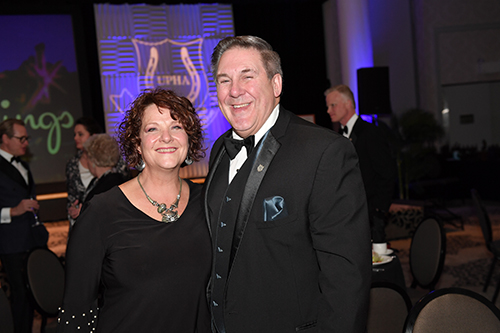 The much-anticipated Safe Sport Forum kicked things off to a filled-to-capacity room on Friday morning, with a giant interactive video screen featuring USEF General Counsel Sonja Keating on the big screen, with USEF CEO Bill Moroney and Eric Barreras from Safe Sport on stage to answer the multitude of questions from the floor. Donna Pettry Smith and Tammy Conatser did a wonderful job of moderating and microphone handling. The first thing discussed was that the USEF is mandated by federal law to employ the Safe Sport practices, as they are an Olympic organization. Another misnomer, blamed on viral social media reports, is that yes, you must take the test, which is about two hours long, if you are an amateur over 18 and if you own a horse. For those who own many horses, or in instances when the horses are owned by a corporate entity, I believe the president of said corporation just needs to take the test once. Not everything was crystal clear, and many questions will be taken back to Safe Sport and answered on their website.
The much-anticipated Safe Sport Forum kicked things off to a filled-to-capacity room on Friday morning, with a giant interactive video screen featuring USEF General Counsel Sonja Keating on the big screen, with USEF CEO Bill Moroney and Eric Barreras from Safe Sport on stage to answer the multitude of questions from the floor. Donna Pettry Smith and Tammy Conatser did a wonderful job of moderating and microphone handling. The first thing discussed was that the USEF is mandated by federal law to employ the Safe Sport practices, as they are an Olympic organization. Another misnomer, blamed on viral social media reports, is that yes, you must take the test, which is about two hours long, if you are an amateur over 18 and if you own a horse. For those who own many horses, or in instances when the horses are owned by a corporate entity, I believe the president of said corporation just needs to take the test once. Not everything was crystal clear, and many questions will be taken back to Safe Sport and answered on their website.
Mr. Barreras did say that this particular forum had the smartest and most well thought out questions of any he had attended, but he admittedly did not have all the answers. Keating and Moroney were much more authoritative on the USEF’s end about costs and reasons for the program. No one in the room was arguing that sexual assault or inappropriate behavior isn’t possible or even that the test in itself was bad. What was at issue was the supposed due rights trainer’s assumed they have, and it was pointed out that as members of a private association, those due rights as an US citizen don’t apply to a private association the same way. The complaints that could be made involving a special investigator can take a life of their own, with summary verdicts on the spot, and it’s of course fearful to professionals and even amateurs that a shout from the rail or admonishment in the aisles may be reported and cause for investigation or worse.
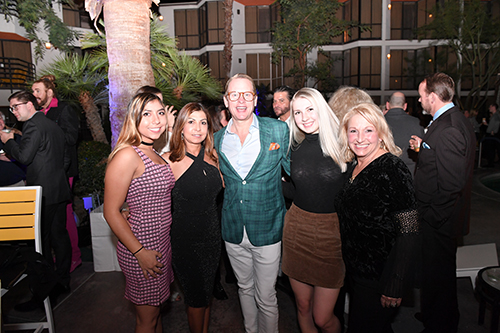
The USEF is working to enhance the accused’s chance for a response and the ability to argue their innocence before the Safe Sport people write them up. The gist of the conversation was “how do we get to that point, and can the USEF make Safe Sport understand how we differ from might happen at Olympic style competitions?” We generally have responsible adults all over the show grounds, and our exhibitors don’t wander around foreign countries or student housing on their own like Olympic Village where some of the notorious violations have occurred. Also it’s only owners, trainers and riders that have to take the test. What about support personnel or random spectators? These are summations of a meeting that was set for two hours but ran three hours long. All questions were well thought out, all were asked in non-argumentative fashion and all were answered to the extent they could be by the panel.
Lots of internet chatter has been going around about why we need the USEF if they’re only going to generalize actions or accept false accusations as the truth, and the USEF and Safe Sport claim to realize more gaps have to be filled in and addressed. It’s as new a concept to the USEF as it is to us, but driven by U.S. law. One thing that was mentioned was what do we get out of our association with the USEF? Mainly we get a rulebook that they own, we get the insurance it takes to cover officials, members and exhibitors from accusations, as well as an organization that’s big enough to cast an umbrella over our whole organization. We currently have two seats on their board of directors, which would only diminish if there were a mass exodus of membership. Sonja Keating also said it’s completely inaccurate to accuse the Federation of profiting off the Safe Sport mandate. They pay roughly $90,000 per year, which would be far cheaper than paying their own people to investigate. There is no overage in dues that the USEF keeps.
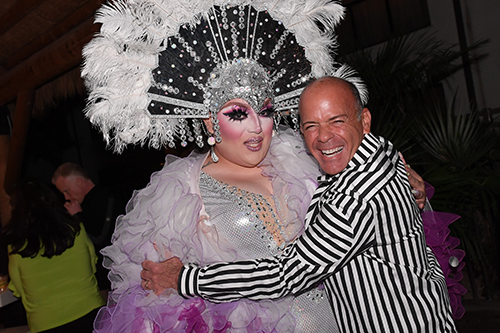 Lots and lots of statistics were put out in either the handouts or from the stage, but one in three women and one in six men will experience some type of harassment or social violence in their life. Even one such incidence is too many. Almost half of the 45 million youth that participate in sport (not just equestrian) will experience some sort of sexual abuse. Again, one is too many.
Lots and lots of statistics were put out in either the handouts or from the stage, but one in three women and one in six men will experience some type of harassment or social violence in their life. Even one such incidence is too many. Almost half of the 45 million youth that participate in sport (not just equestrian) will experience some sort of sexual abuse. Again, one is too many.
Safe Sport will have exclusive domain over accusations of sexual misconduct while the USEF will continue to handle reports of bullying, harassment, hazing or emotional or physical abuse.
I’ve surmised most of the rapid-fire questions and lengthy answers into a few paragraphs, but please don’t take this as the gospel. The UPHA is trying to work with the other alphabet organizations in hope of reducing the need for amateurs to also have to take the test in order to show. The test is a pain, but it is not hard. It takes roughly two hours of your life; I’ve taken it, and it is mostly common sense scenarios asked in various ways: what’s bullying, what’s emotional harassment and of course what’s sexual harassment. Like most laws, we all know what’s right or wrong, and I assume trainers are at greater risk being in positions of authority, while amateur exhibitors are not as apt to have power over another, as most of our amateurs are never in large group settings where that type of behavior can occur, and for the younger amateurs, they’re usually with family. The USEF only offers its insurance coverage if you take the test and become a member. There is no other way to become a member, and the show day passes have increased in cost so much that only a few shows add up to that of the cost of membership. More info will be found online at safesport.org.
There were pages and pages of information as to their procedures and your rights, and while it seems like we have few rights, their procedures do seem to be rather draconian and need to be more consumer friendly. For instance there are no preliminary hearings and no rights to a jury or trial. Though you do have a chance to be heard by their “board” of investigators, and you may have an advisor or attorney, there’s no cross examination or right to confrontation at arbitration, and their burden of proof is merely a preponderance of evidence, not beyond a reasonable doubt. Lots of legal terminology that go above this journalist’s head, so again I’m merely stating the facts as I understand them and quoting from their handouts. I think it’s safe to say both sides learned a lot, and some of the shroud of mystery has lifted. The USEF is working hard to incorporate protections against acts that were more preponderant at the Olympics than they certainly are in our sport. However it is an order by federal law, so it is not to be taken lightly. We will keep you informed as situations evolve. I, as many, went in expecting an explosion of emotions, but came out with a bit more understanding as to why this is happening and why it’s happened so fast.
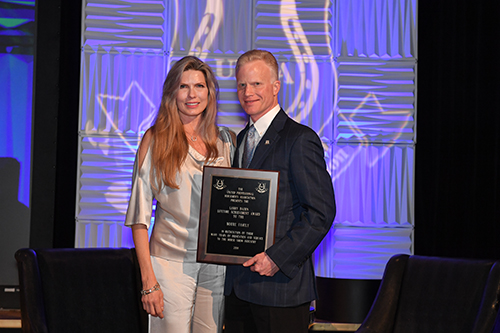
Since the Safe Sport session went long, the meeting of young professionals was brief, and encouraged trainers to help with the popular Ribbons Of Service program, as well as to get involved further with the UPHA so they will someday know how to run the UPHA themselves in 20 or so years. Lunch was a welcome break, featuring, of course, another bevy of awards, and was followed by two forums on how to create a more profitable business model and the always-present “who’s breeding horses” session.
Sheri Brandl and Christy Parker were very forthcoming on some of their extra money making ventures, which they modeled after the fast food industries business model of “Would you like fries with that?” In other words, other things besides showing horses that can make you money. Parker said that for her, discounts do work, while Brandl said she offers packages for new riders. Both strategies are to of course get the child on a horse, have them love it, talk the parents into more lessons, then someday into buying a horse. Not to be overlooked is the 4-H program and the scouts, both which have in fact attracted long term and even champion caliber purchases. Often those organizations will pay just to pet a horse or do free labor to earn a merit badge. They both agreed that if you can put a new customer on an auto debit program it vastly improves the likeliness that they will finish out a lesson program or even renew it.
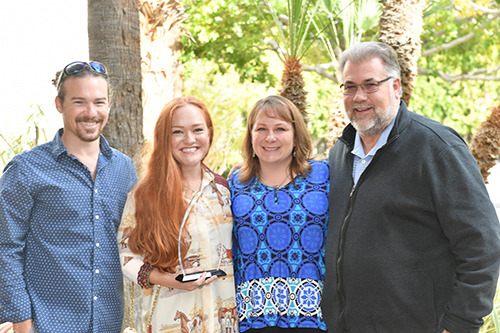 Parker had countless tails about how goats work well for students on field trips or birthday parties, and even the mini she owned was used as a unicorn several times and required zero effort on her part.
Parker had countless tails about how goats work well for students on field trips or birthday parties, and even the mini she owned was used as a unicorn several times and required zero effort on her part.
So many other things can earn extra revenue as well, such as camps, clinics, fun shows, free ride time and even leasing a lesson horse. It earns decent bucks and often attracts permanent clients. Social media apps such as Thumbtack, Gohorse and even local ads help attract clientele. Business outings and even weddings for those with the right romantic style barns have earned Parker lots of extra bucks. It was a very enjoyable and informative meeting for sure.
This was quickly followed by Donna Pettry-Smith and Tiffany Wheeler telling the audience how they bill, but with different strategies. First Wheeler actually put on screen her QuickBooks balance sheet, which after all’s said and done with almost all conceivable overheads taken out vs. what’s charged for training in board, added up to a profit of roughly $9 every time the horse was worked. She explained why day fees were necessary, why commissions were necessary and why various equipment and hauling fees were necessary. Basically she said it was so they could survive and maybe put some money into savings. It really was a concise presentation of what a barn’s balance sheet looks like. Donna Pettry-Smith approached it differently, charging far more for training and board, but not charging sales commissions or many of the smaller fees that most barns do, as her price per month factored the average of all that in. There was a lot of rumbling in the crowd when one of the ladies mentioned hay was $5 per bale. I think most those rumblings were from those living in the Southwest.
Jim and Jenny Taylor and Todd Graham gave a slide show analysis of our registration numbers, which are dismal, and using self styled analytics are figuring that only 59% of breedings resulted in a live foal, which is a low number when compared to most breeds. They took a visit to the illustrious Lane’s End Thoroughbred farm and put together a video interview with stallion director Chance Timm. In essence they only do live cover and have a success rate of 90%, they let mares visit for free until there’s a foal, and often have a stud breed up to four times a day. A dramatic difference from how our world works. In Timm’s opinion stallions do better when they are constantly busy: no rest for the weary. The session was aptly summed up with them saying, “Too many trainers, not enough horses.” They also were encouraging young trainers to take their mares and get them in foal if we want to grow as a viable sport. The numbers aren’t lying.
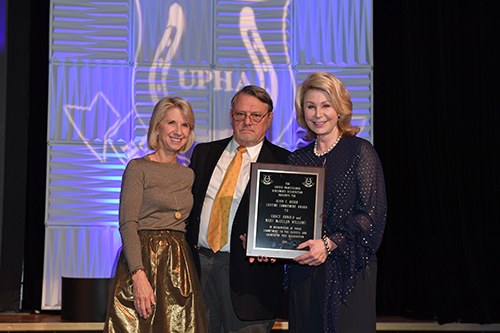
The Charter Club Council has a goal to fix the ASHA High Point Tabulation Procedure so that class names could be standardized in the prize lists and results. They will work on creating a guide to properly name classes so that points are tallied correctly. Standardizing the various forms we all fill out also needs to be addressed and maybe available from the ASHA website at some point.
Party time again followed an hour later, this one hosted by Carson Kressley at the pool area, where the booze was flowing and appetizers were quickly gobbled up. Carson, of course, was a fabulous host, taking the time for a lot of selfies with his friends and fans. Also entertaining for photo taking was a large, brightly adorned drag queen, who was also the subject of a lot of selfies. Alas the party wasn’t endless, but its memories certainly are. With no awards banquet that night, the crowd was on its own to wine and dine and wine some more in the nearby downtown area, full of magnificent restaurants and late night shopping.
Saturday morning featured closed meetings for the Ribbons Of Service participants. Another equitation forum was held, with Missy Hughes-Smith enlisting live models to demonstrate tasks that are unique to the world of equitation, including creating the perfect bun for the girl with very thick hair! Properly fitting a suit was also covered, and of course there were many opinions on that.
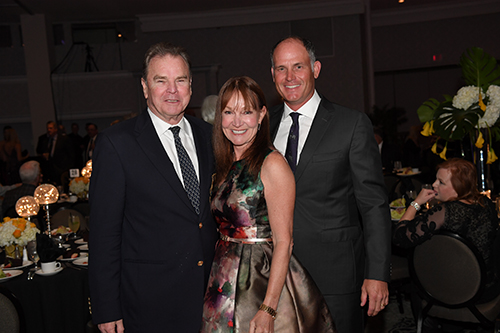
Another awards luncheon followed, which itself was followed with a “state of our industry” address that mostly generalized what has already been said in this story. Do we stick with the USEF, if not what are the enormous and expensive consequences of governing ourselves? Out of all our shows only 70 are USEF affiliated, the rest are not, but the principals of the USEF trickles down to those shows as well. There will be negotiations with the USEF and hopefully all the various show groups can speak with one louder voice. The giant rulebook that’s really a many gigabyte thumb drive is incredibly daunting, and it would be wonderful if it could be reformatted for simplification and ease of use. Lynda Freseth suggested that standardized entry blanks and other forms be available on a website for ease of both the consumer and the provider. David Rudder mentioned that there is some interest in creating criteria for a “claiming” class, probably in the park division, which would work along the lines of how a claiming race operates at the racetrack. Any horse in that class could be bought for whatever level the class was. It would create change and interest and the ultimate showcase if every horse in that class could be instantly bought for set sum of money. Change is in the air, and we have a dedicated core of professionals and amateurs to affect that change for the good of the breed in the modern world. It’s coming whether we like it or not.
The wrap up awards dinner also featured the silent auction, which netted more than $64,000, including items from the silent auction as well as the live auction, which featured fast and furious bidding on riding some World’s Champion horses. Also of spectacular note, the young exhibitors involved in the Ribbons Of Service Program raised an astounding $37,000 for St. Jude Children’s Research Hospital and another $3,000 for other charities. Well done to our great youth! All award winners are listed elsewhere, but a particularly memorable one was Grace Arnold and her sister Lauren accepting the Alvin Ruxer Lifetime Achievement award on behalf of their mother, Mary McLellan Williams, with Grace as the co-recipient. A very well deserved and moving tribute, as they all were.
Smith Lilly closed out the meeting by thanking all the volunteers like Pam Roush, Jess Verrill, Cheryl Innes, Amanda Ward, Deidre DeVore, Nancy Troutman, Carol Reedy, Tyler Gregory, Cynthia Lowell and Jessica Cushings, as well as the officials of the conference, Beth Snider, R.H. Bennett, Mark Farrar, Tuffy Owens, Howie Shatzberg and Walt Robertston.
Sadly it was sunny and gorgeous on Sunday as most of us traveled back East with winter storm warnings delaying flights and making us wish for one more day in the mild climate.



